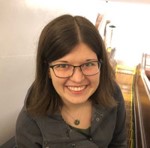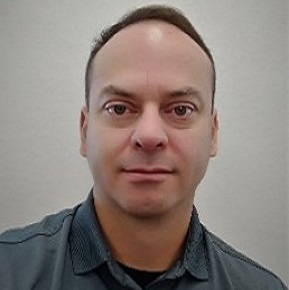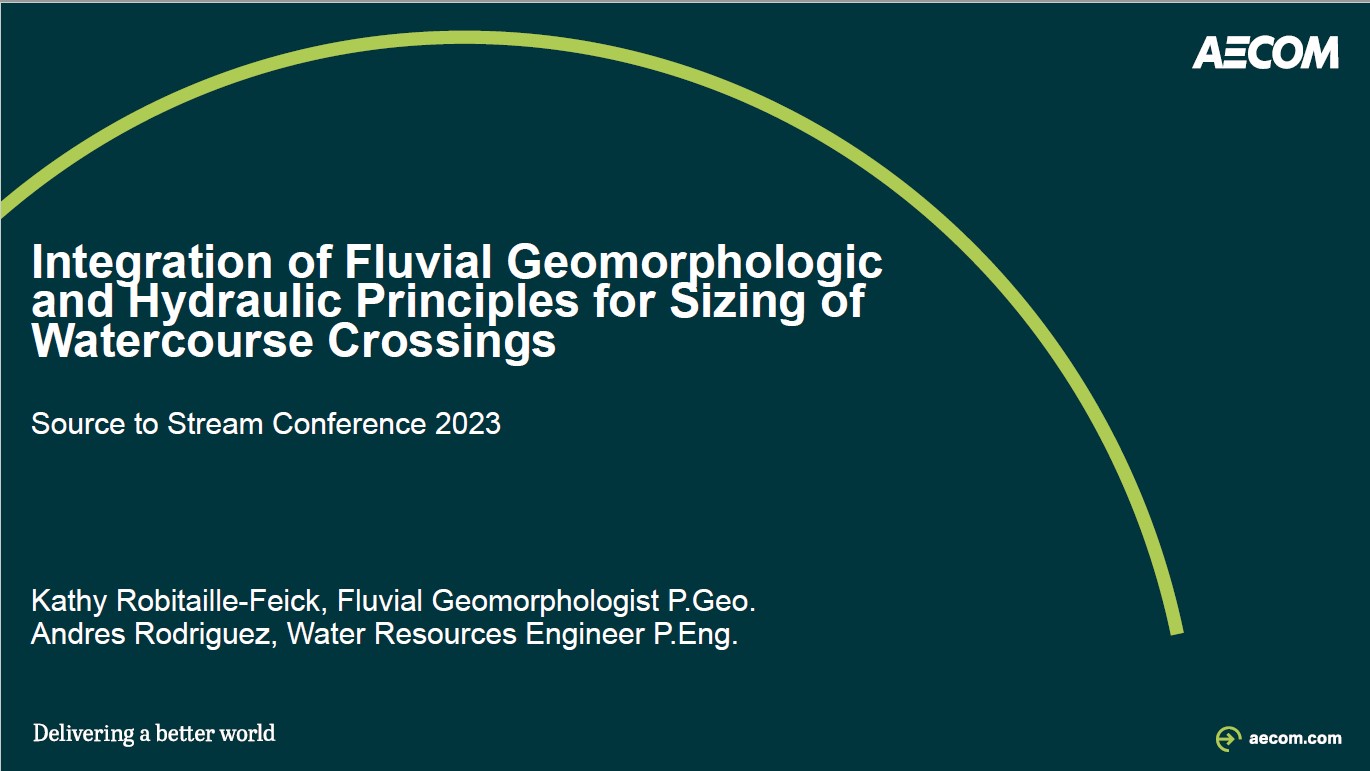TRACK 2, DAY 2
Integration of Fluvial Geomorphologic and Hydraulic Principles for Sizing of Watercourse Crossings
ABSTRACT
Current protocols that are used in stream crossing design help define and guide analytical work to provide a standardized method of assessment, which involves a multidisciplinary approach.
Fluvial geomorphic principles, such as the meander belt and erosion rate, are applied to promote long-term sustainability to the watercourse by maintaining form and function of the channel, as well as protecting the crossing structure. Hydraulic assessments assist by filling the gap between the physical setting of a crossing structure and its interaction with water conveyance along the watercourse for a series of flow magnitudes.
As the flow regime changes considerably with time, the evaluation of low and high flows provide input into the size, type, and orientation of the crossing structure.
Furthermore, as remote sensing tools such as LiDAR become available for more areas, hydraulic models increase their sophistication, allowing for a detailed assessment of a stream crossing to improve the design and maximize efficiencies during maintenance, installation or replacement of the structure(s).
ERMP staff are also partnering with academic institutions to explore the use of artificial intelligence (AI) to connect the longevity of essential erosion control structures to ecosystem services, and therefore the value of both major and minor maintenance and repair.
This presentation will focus on adapting approaches to sizing watercourse crossings through consideration of sediment entrainment and transport equations (which relates to erosion and sedimentation processes) applied to hydraulic models (1D and 2D). Examples will be provided using a hypothetical crossing example, as well as a discussion of site-specific opportunities and constraints of its application
ABOUT THE PRESENTERS

Kathy Robitaille-Feick, AECOM
Mrs. Robitaille-Feick is a fluvial geomorphologist registered with the PGO. She has experience working on various fluvial geomorphology assessments and reports, as well six years of experience working on projects for the exploration and mining sectors. She is currently the Senior Fluvial Geomorphologist at AECOM.

Andres Rodriguez, AECOM
Andres is a Water Resources Engineer with over 18 years of experience and has participated in several projects that include hydrologic and hydraulic assessments, such as design of highway crossings, dam safety reviews, floodplain delineations, as well as erosion and scour assessments at culverts and bridges. Andres is an expert in the development of hydrologic and hydraulic computer model simulations and the use of GIS tools to analyze and present the findings of these models.

